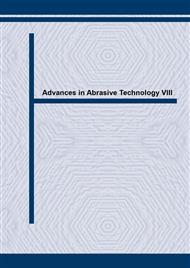p.593
p.597
p.603
p.609
p.615
p.619
p.625
p.631
p.637
Application of Neural Network in Plasma-Arc Flexible Forming
Abstract:
Flexible forming using plasma arc (FFUPA) is a newly developed method of sheet metal forming. It makes the forming by means of thermal stress and thermal strain without mould and die, and is recognized as a promising forming method in developing new products. But the forming effect of FFUPA is determined by many factors, which compose a highly nonlinear system due to their complicated interact. As a result, it is difficult to predict the forming results and choose the processing parameters in FFUPA. In this paper, BP neural network is applied to solve this problem. After introducing the mechanism of FFUPA and analyzing the influence of processing parameters on the forming result, BP neural network is established, which include an input layer, an output layer and a hidden layer. When inputs and outputs are properly chosen, the BP neural network can be used to predict the forming results and to select the forming parameters. To verify the validity of this network, the results obtained by the BP neural network are compared to those obtained by experiments, and the results show that the former is close to the later, which indicates it is feasible to apply BP neural network in determining the processing parameters and forecasting the bending effects in FFUPA.
Info:
Periodical:
Pages:
615-618
Citation:
Online since:
August 2005
Authors:
Keywords:
Price:
Сopyright:
© 2005 Trans Tech Publications Ltd. All Rights Reserved
Share:
Citation:


